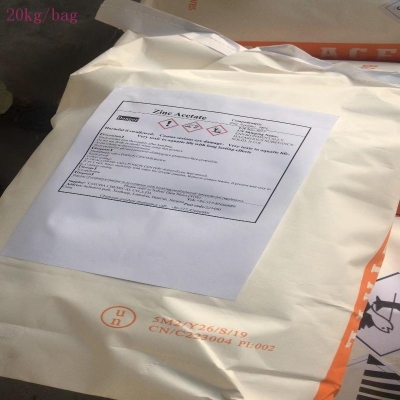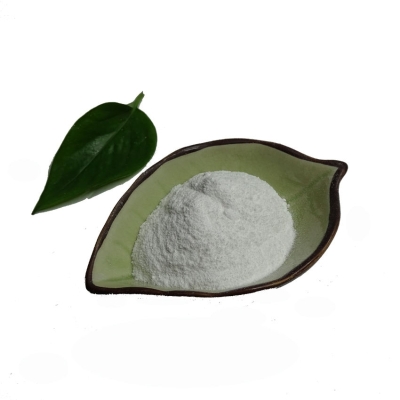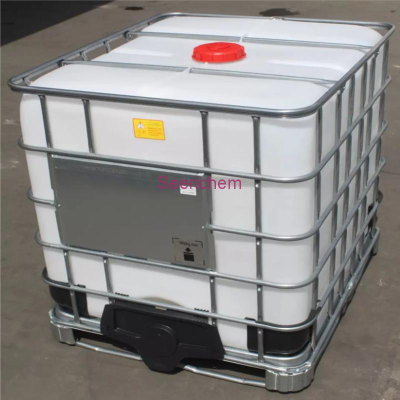-
Categories
-
Pharmaceutical Intermediates
-
Active Pharmaceutical Ingredients
-
Food Additives
- Industrial Coatings
- Agrochemicals
- Dyes and Pigments
- Surfactant
- Flavors and Fragrances
- Chemical Reagents
- Catalyst and Auxiliary
- Natural Products
- Inorganic Chemistry
-
Organic Chemistry
-
Biochemical Engineering
- Analytical Chemistry
-
Cosmetic Ingredient
- Water Treatment Chemical
-
Pharmaceutical Intermediates
Promotion
ECHEMI Mall
Wholesale
Weekly Price
Exhibition
News
-
Trade Service
Since October, the price of urea has skyrocketed.
Take Shandong, the most representative market, as an example.
At the beginning of October, the ex-factory price of urea was less than 1,200 yuan (ton price, the same below), but by mid-November, it had broken through the 1,500 yuan mark, mostly between 1510 and 1530 yuan.
The increase exceeded 300 yuan in just over a month.
Urea prices have risen sharply, and market optimism has reappeared.
Some people even shouted: The 2008 market is here again.
What is the market in 2008? The ex-factory price of urea has risen to 2500 yuan.
Is the urea market really so optimistic? The author believes that as the price of urea continues to rise, market risks are also increasing.
First, the coal price is likely to fall.
The market acknowledges that this round of urea price increase is actually driven by the increase in coal prices.
Regarding the issue of coal prices, the relevant person in charge of the National Development and Reform Commission made it clear that this round of excessive rise in coal prices is not only a manifestation of the effects of the country’s overcapacity reduction and production control policies, but also irrational increases caused by the superposition of phased and occasional factors, which are related to hot money.
Hype also matters.
The room for coal price increase in the current winter has been advanced.
With the release of advanced production capacity, middlemen will gradually put coal on the market.
During the peak winter period, the effective supply of the market will inevitably increase significantly, and the supporting factors for price increases will no longer exist.
On November 23, the Bohai Rim Thermal Coal Price Index closed at 601 yuan, down 3 yuan from the previous month.
It has been down for three consecutive periods, and the trend of coal prices peaking and falling is very obvious.
The previous rise in coal prices firmly supported the rise in urea prices, but the supporting role of this factor has been greatly reduced.
Second, the trend of international oil prices is reversed.
While coal prices have repeatedly hit new highs, oil prices have shown opposite trends.
In early November, international oil prices fell for six consecutive trading days.
On November 25, the international oil price suffered another heavy setback.
As Saudi Arabia announced that it would not participate in the November 28 production restriction consultation preparation meeting, the move made the market doubt whether the Organization of the Petroleum Exporting Countries (OPEC) would actually cut production.
The U.
S.
WTI crude oil futures price fell 4.
17% to US$45.
96 per barrel.
; Brent crude oil futures prices fell 3.
60% to $47.
10 per barrel.
Most of the international urea uses natural gas as the raw material, and the price of natural gas is closely related to the price of oil.
The international oil price is currently difficult to effectively pass US$50/barrel.
If it does not rise to more than US$60/barrel, the price of urea will hardly remain at a high level.
Third, the output of urea is still relatively large.
Industry statistics show that due to serious losses, the number of companies that stop production continues to increase.
In September, the national daily output of urea was 147,000 tons, which was 52,000 tons lower than this year's highest daily output, a decrease of 26.
1%.
The plant operating rate is only 55.
4%, which is 16.
9 percentage points.
However, because the urea production capacity is as high as 82 million tons, with the rapid increase in prices, the early parking companies resume production, and it is easy to increase the output.
After a long time, I am afraid that urea will be difficult to sell.
Fourth, insufficient demand is a big problem.
Although the prices of some agricultural products have risen, overall, the prices of agricultural products are still low, farmers are not enthusiastic about planting, and the demand for chemical fertilizers is limited.
Now the demand for urea mainly comes from hoarding.
Some dealers are busy with inventory.
Once the market drops, there will be a situation where manufacturers and dealers compete for shipments.
Fifth, exports are facing challenges.
In recent years, strong international market demand is an important factor driving the rapid growth of domestic fertilizer production.
In 2015, China's nitrogen fertilizer exports reached 9.
96 million tons (equivalent to pure), accounting for 21% of domestic production, but the situation has changed this year.
With the successive commissioning of new foreign production capacity, China's nitrogen fertilizer exports have brought huge competitive pressure.
From January to August, China's urea export volume decreased by 20.
6% year-on-year.
According to IFA statistics, 8 million tons of new urea production capacity has been added this year, and Iran’s sanctions have been lifted.
With the release of new global nitrogen fertilizer production capacity, the United States will become self-sufficient from a urea importing country to a urea exporting country.
Africa will become an emerging urea exporting country.
Exporters in the Middle East are also paying attention to the East and West African markets.
Competition with West African urea.
Sixth, it is becoming more difficult to reduce production capacity.
The overcapacity rate of urea exceeds 30%.
The low price is a good time to reduce capacity.
Some companies with high costs have been forced to suspend production during the recent three-year decline.
However, the price of urea has risen sharply, which has provided these companies with recovery.
Production opportunities, urea production capacity reduction has become more difficult.
6%.
According to IFA statistics, 8 million tons of new urea production capacity has been added this year, and Iran’s sanctions have been lifted.
With the release of new global nitrogen fertilizer production capacity, the United States will become self-sufficient from a urea importing country to a urea exporting country.
Africa will become an emerging urea exporting country.
Exporters in the Middle East are also paying attention to the East and West Africa markets.
China’s urea exports have to face the problems from the Middle East.
Competition with West African urea.
Sixth, it is becoming more difficult to reduce production capacity.
The overcapacity rate of urea exceeds 30%.
The low price is a good time to reduce capacity.
Some companies with high costs have been forced to suspend production during the recent three-year decline.
However, the price of urea has risen sharply, which has provided these companies with recovery.
Production opportunities, urea production capacity reduction has become more difficult.
6%.
According to IFA statistics, 8 million tons of new urea production capacity has been added this year, and Iran’s sanctions have been lifted.
With the release of new global nitrogen fertilizer production capacity, the United States will become self-sufficient from a urea importing country to a urea exporting country.
Africa will become an emerging urea exporting country.
Exporters in the Middle East are also paying attention to the East and West Africa markets.
China’s urea exports have to face the problems from the Middle East.
Competition with West African urea.
Sixth, it is becoming more difficult to reduce production capacity.
The overcapacity rate of urea exceeds 30%.
The low price is a good time to reduce capacity.
Some companies with high costs have been forced to suspend production during the recent three-year decline.
However, the price of urea has risen sharply, which has provided these companies with recovery.
Production opportunities, urea production capacity reduction has become more difficult.
Take Shandong, the most representative market, as an example.
At the beginning of October, the ex-factory price of urea was less than 1,200 yuan (ton price, the same below), but by mid-November, it had broken through the 1,500 yuan mark, mostly between 1510 and 1530 yuan.
The increase exceeded 300 yuan in just over a month.
Urea prices have risen sharply, and market optimism has reappeared.
Some people even shouted: The 2008 market is here again.
What is the market in 2008? The ex-factory price of urea has risen to 2500 yuan.
Is the urea market really so optimistic? The author believes that as the price of urea continues to rise, market risks are also increasing.
First, the coal price is likely to fall.
The market acknowledges that this round of urea price increase is actually driven by the increase in coal prices.
Regarding the issue of coal prices, the relevant person in charge of the National Development and Reform Commission made it clear that this round of excessive rise in coal prices is not only a manifestation of the effects of the country’s overcapacity reduction and production control policies, but also irrational increases caused by the superposition of phased and occasional factors, which are related to hot money.
Hype also matters.
The room for coal price increase in the current winter has been advanced.
With the release of advanced production capacity, middlemen will gradually put coal on the market.
During the peak winter period, the effective supply of the market will inevitably increase significantly, and the supporting factors for price increases will no longer exist.
On November 23, the Bohai Rim Thermal Coal Price Index closed at 601 yuan, down 3 yuan from the previous month.
It has been down for three consecutive periods, and the trend of coal prices peaking and falling is very obvious.
The previous rise in coal prices firmly supported the rise in urea prices, but the supporting role of this factor has been greatly reduced.
Second, the trend of international oil prices is reversed.
While coal prices have repeatedly hit new highs, oil prices have shown opposite trends.
In early November, international oil prices fell for six consecutive trading days.
On November 25, the international oil price suffered another heavy setback.
As Saudi Arabia announced that it would not participate in the November 28 production restriction consultation preparation meeting, the move made the market doubt whether the Organization of the Petroleum Exporting Countries (OPEC) would actually cut production.
The U.
S.
WTI crude oil futures price fell 4.
17% to US$45.
96 per barrel.
; Brent crude oil futures prices fell 3.
60% to $47.
10 per barrel.
Most of the international urea uses natural gas as the raw material, and the price of natural gas is closely related to the price of oil.
The international oil price is currently difficult to effectively pass US$50/barrel.
If it does not rise to more than US$60/barrel, the price of urea will hardly remain at a high level.
Third, the output of urea is still relatively large.
Industry statistics show that due to serious losses, the number of companies that stop production continues to increase.
In September, the national daily output of urea was 147,000 tons, which was 52,000 tons lower than this year's highest daily output, a decrease of 26.
1%.
The plant operating rate is only 55.
4%, which is 16.
9 percentage points.
However, because the urea production capacity is as high as 82 million tons, with the rapid increase in prices, the early parking companies resume production, and it is easy to increase the output.
After a long time, I am afraid that urea will be difficult to sell.
Fourth, insufficient demand is a big problem.
Although the prices of some agricultural products have risen, overall, the prices of agricultural products are still low, farmers are not enthusiastic about planting, and the demand for chemical fertilizers is limited.
Now the demand for urea mainly comes from hoarding.
Some dealers are busy with inventory.
Once the market drops, there will be a situation where manufacturers and dealers compete for shipments.
Fifth, exports are facing challenges.
In recent years, strong international market demand is an important factor driving the rapid growth of domestic fertilizer production.
In 2015, China's nitrogen fertilizer exports reached 9.
96 million tons (equivalent to pure), accounting for 21% of domestic production, but the situation has changed this year.
With the successive commissioning of new foreign production capacity, China's nitrogen fertilizer exports have brought huge competitive pressure.
From January to August, China's urea export volume decreased by 20.
6% year-on-year.
According to IFA statistics, 8 million tons of new urea production capacity has been added this year, and Iran’s sanctions have been lifted.
With the release of new global nitrogen fertilizer production capacity, the United States will become self-sufficient from a urea importing country to a urea exporting country.
Africa will become an emerging urea exporting country.
Exporters in the Middle East are also paying attention to the East and West African markets.
Competition with West African urea.
Sixth, it is becoming more difficult to reduce production capacity.
The overcapacity rate of urea exceeds 30%.
The low price is a good time to reduce capacity.
Some companies with high costs have been forced to suspend production during the recent three-year decline.
However, the price of urea has risen sharply, which has provided these companies with recovery.
Production opportunities, urea production capacity reduction has become more difficult.
6%.
According to IFA statistics, 8 million tons of new urea production capacity has been added this year, and Iran’s sanctions have been lifted.
With the release of new global nitrogen fertilizer production capacity, the United States will become self-sufficient from a urea importing country to a urea exporting country.
Africa will become an emerging urea exporting country.
Exporters in the Middle East are also paying attention to the East and West Africa markets.
China’s urea exports have to face the problems from the Middle East.
Competition with West African urea.
Sixth, it is becoming more difficult to reduce production capacity.
The overcapacity rate of urea exceeds 30%.
The low price is a good time to reduce capacity.
Some companies with high costs have been forced to suspend production during the recent three-year decline.
However, the price of urea has risen sharply, which has provided these companies with recovery.
Production opportunities, urea production capacity reduction has become more difficult.
6%.
According to IFA statistics, 8 million tons of new urea production capacity has been added this year, and Iran’s sanctions have been lifted.
With the release of new global nitrogen fertilizer production capacity, the United States will become self-sufficient from a urea importing country to a urea exporting country.
Africa will become an emerging urea exporting country.
Exporters in the Middle East are also paying attention to the East and West Africa markets.
China’s urea exports have to face the problems from the Middle East.
Competition with West African urea.
Sixth, it is becoming more difficult to reduce production capacity.
The overcapacity rate of urea exceeds 30%.
The low price is a good time to reduce capacity.
Some companies with high costs have been forced to suspend production during the recent three-year decline.
However, the price of urea has risen sharply, which has provided these companies with recovery.
Production opportunities, urea production capacity reduction has become more difficult.







